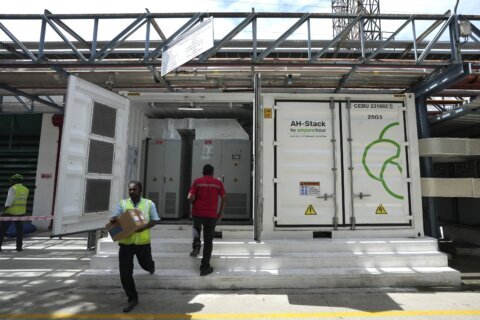The idea of a high-yield investment sounds great. Who wouldn’t want a stock or bond that generates above-average returns compared to other investments, whether through higher interest rates, dividends or potential capital gains?
If that sounds suspiciously easy, you’re on to something. High-yield investments often come with increased risk, and many can be yield traps — investments that have high yields but unhealthy fundamentals.
When the price of a stock or bond goes down, its yield generally goes up. You can calculate yield by dividing the annual income generated by the investment, such as dividends or interest payments, by its current price.
[Sign up for stock news with our Invested newsletter.]
According to Rick Nott, senior wealth advisor at Lourd Murray in Los Angeles, investors should use caution when considering an investment with a high yield.
“Investors should always question outliers: anything that offers what seems like a higher or better return or yield than the average,” he says. “There is no magic in finance, so there will always be a reason. There may be good reasons, but the higher the yield than the average, the closer you should look to find out why.”
Why Do Some Stocks and Bonds Have High Yields?
There are various reasons why a stock or bond may have a higher-than-average yield. One factor is increased risk. Investments with higher risk levels tend to offer higher yields to compensate investors. For example, high-yield bonds are sometimes dubbed “junk bonds.”
These bonds offer buyers a higher interest rate because their credit ratings are lower than bonds deemed investment grade. Junk bonds tend to be issued by younger companies, or those in capital-intensive businesses with high debt-to-equity ratios.
Sometimes a company’s financial condition deteriorates, and its debt is downgraded to junk. Those companies are called “fallen angels.” Carnival Corp. (ticker: CCL) is an example of a capital-intensive company whose debt was downgraded due to loss of revenue amid pandemic-era restrictions on cruise lines.
[SEE: 7 Best Monthly Dividend Stocks to Buy Now.]
Why High-Yield Investments Are Risky
Factors such as weak cash positions and a higher risk of default contribute to a bond having a poor credit rating, which results in a higher yield, as investors demand to be compensated for taking the additional risk. However, some investors like the idea of a higher yield, and fail to do any homework to understand how risky those bonds can be.
“These factors make it difficult for them to generate consistent cash flows needed for debt obligations,” says Lisa McKnight, managing director and wealth advisor at Peapack Private Wealth Management in Summit, New Jersey. “If the company is facing financial distress, they may prioritize other payments over bond repayments, increasing the risk of default.”
She adds that high-yield bonds are less liquid than investment-grade bonds. This may mean few buyers and sellers are in the market, resulting in a wider bid-ask spread, which potentially makes it harder to sell the bond quickly if needed.
Investors seeking higher returns, she says, must be willing to accept the increased risk as part of their overall investment strategy. For that reason, it’s important that investors have a clear understanding of their risk tolerance, and diversify their portfolios with other investments to smooth the risks associated with high-yield bonds.
Nott says investors should think of the interest rate on a bond in the same way as they would with a personal loan, such as for a mortgage, car or credit card. “Borrowers with better credit scores are perceived as less risky, and therefore get lower rates,” he says.
He adds that investors can run into trouble with bond yields when they buy a bond with a maturity date far into the future, but they need to sell the bond before it matures.
If market rates are higher when the holder needs to unload it, it will sell at a discount and the owner may take a loss.
“This is what brought down Silicon Valley Bank, but it’s Bonds 101,” Nott says.
When Is a High-Yield Investment a Safe Bet?
Walter Russell, president of financial advisory firm Russell & Associates in New Albany, Ohio, notes that many quality companies that are not in distress pay a high dividend yield on their stocks. He cites utilities and telecoms, such as Verizon Communications Inc. (VZ) and AT&T Inc. (T), whose dividend yields are 7.5% and 7.3%, respectively.
Russell points out that companies from the real estate and oil and gas industries often have high dividend yields. Real estate investment trusts, or REITs, and oil and gas master limited partnerships are both required to pay out a certain portion of profit to shareholders as dividends, resulting in a high yield.
“Just because a stock has a high yield that doesn’t mean it’s in distress,” he says, adding that some companies simply want to return a higher portion of annual profits to shareholders, or are required to.
What to Know Before Pursuing High-Yield Investments
Russell advises against chasing yield in individual stocks and suggests that investors who need a higher payout buy either a mutual fund or an exchange-traded fund, or ETF, to reduce risk.
When evaluating stocks with high dividend yields, McKnight recommends considering several factors, including revenue growth, profitability and debt levels, as well as the company’s competitive position within its industry.
For example, there’s a big difference in quality between a retailer like Party City Holdco Inc. (PRTYQ), which filed for bankruptcy earlier this year, and Lululemon Athletica Inc. (LULU), whose earnings and revenue have been growing at double-digit rates, and whose stock is trading near 52-week highs.
Also, McKnight says, understanding broader market conditions and the dynamics of a company’s industry is crucial.
“A high yield could be the result of temporary market fluctuations or specific industry challenges rather than a reflection of the company’s long-term prospects,” she says.
Knowing whether a company can maintain its dividend payments is also important, McKnight notes.
“If the dividend policy is unsustainable, the company will be forced to cut or eliminate it, which will, in turn, affect the stock price,” she says.
[See: 7 Best ETFs to Buy Now.]
More from U.S. News
How to Analyze a Stock’s Dividend
7 Best Dividend ETFs to Buy Now
7 High-Yield ETFs for Income Investors
Understanding the Hidden Pitfalls of High-Yield Investments originally appeared on usnews.com







